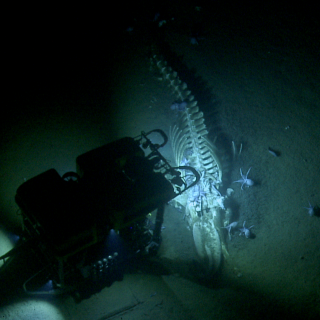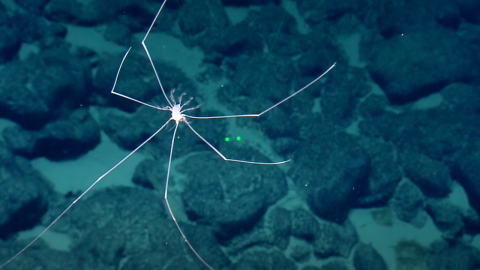Return to the Davidson Seamount Whale Fall
What a difference a year makes! In October 2020, E/V Nautilus returned to the Davidson Seamount whale fall in Monterey Bay National Marine Sanctuary to find a dramatically different scene from the one discovered just the year before.
During the final dive of the 2019 Nautilus expedition season, our team discovered the skeletal remains of the baleen whale lying on its back.
“It is so different,” noted scientists aboard the vessel.
A whale fall occurs when a deceased whale descends to the seafloor, bringing with it a banquet of vital nutrients to deep-sea scavengers. A side-by-side comparison of the 2020 visual survey taken by ROV Hercules in 2019, showed that the whale fall had undergone dramatic density changes in the 12 months since our last visit. Whereas the whale fall was once covered in a thriving abundance of life in October 2019, it was nearly devoid of organisms just a year later.
“The rib bones are just kind of disintegrated there,” said Lead Scientist Chad King. “The whole rib cage was supported last year. I mean, it was still upright and everything.”
We sampled large pieces of bone in order to further characterize the whale and the process of decomposition that it underwent, and then we “waved goodbye” — until next year.

Central California NMS
This joint expedition will visit three distinct areas of Monterey Bay National Marine Sanctuary (MBNMS), a region comprising one of the world’s most productive and biologically rich ocean areas protecting over 700 species of fish and deep benthic species. Pioneer Canyon is in the northern portion of MBNMS, and is administered by Greater Farallones National Marine Sanctuary.



